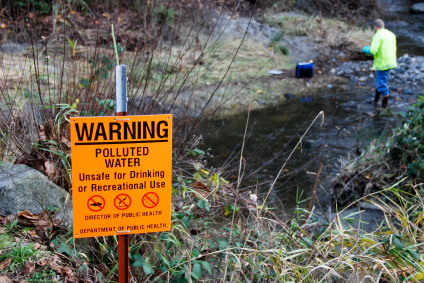 (iStockphoto)Another entry in the New York Times fantastic “Toxic Waters” series came out on Sunday. This latest one is about the slow but tragically effective weakening of the Clean Water Act:
(iStockphoto)Another entry in the New York Times fantastic “Toxic Waters” series came out on Sunday. This latest one is about the slow but tragically effective weakening of the Clean Water Act:
Thousands of the nation’s largest water polluters are outside the Clean Water Act’s reach because the Supreme Court has left uncertain which waterways are protected by that law, according to interviews with regulators. As a result, some businesses are declaring that the law no longer applies to them. And pollution rates are rising.
Companies that have spilled oil, carcinogens and dangerous bacteria into lakes, rivers and other waters are not being prosecuted, according to Environmental Protection Agency regulators working on those cases, who estimate that more than 1,500 major pollution investigations have been discontinued or shelved in the last four years.
The Clean Water Act was intended to end dangerous water pollution by regulating every major polluter. But today, regulators may be unable to prosecute as many as half of the nation’s largest known polluters because officials lack jurisdiction or because proving jurisdiction would be overwhelmingly difficult or time consuming, according to midlevel officials.
“We are, in essence, shutting down our Clean Water programs in some states,” said Douglas F. Mundrick, an E.P.A. lawyer in Atlanta. “This is a huge step backward. When companies figure out the cops can’t operate, they start remembering how much cheaper it is to just dump stuff in a nearby creek.”
“This is a huge deal,” James M. Tierney, the New York State assistant commissioner for water resources, said of the new constraints. “There are whole watersheds that feed into New York’s drinking water supply that are, as of now, unprotected.”
All this despite the dangerous rise in pollutants in our drinking water. Meanwhile, Congress has been trying to engineer a fix in the form of the Clean Water Restoration Act, in particular by removing the word “navigable” from a description of waterways subject to regulation under the CWA. But guess who is among the lobbying groups leading the charge against reform? Our good friends in industrial agriculture, the American Farm Bureau. They are lobbying against the CWRA directly and through corporate front groups like the perniciously named Waters Advocacy Coalition. And here’s what an AFB spokesman had to say to the New York Times:
“If you erase the word ‘navigable’ from the law, it erases any limitation on the federal government’s reach,” said Mr. Parrish of the American Farm Bureau Federation. “It could be a gutter, a roadside ditch or a rain puddle. But under the new law, the government gets control over it.”
Their noisy objections are understandable given that industrial ag is largely responsible for the high levels of pesticides like atrazine in our waterways as well as the dead zone caused by agricultural runoff in the Gulf of Mexico, not to mention the fertilizer-caused pollution troubles in the Chesapeake Bay. Heaven forfend they should actually be held accountable.
The article also suggests that EPA Administrator Lisa Jackson could, on her own, issue a ruling that would clear up some of the confusion regarding the agency’s jurisdiction. She has so far refused, preferring to wait for Congress to act. But with the GOP doing an awesome impersonation of a brick wall, it’s hard to see the legislation moving forward anytime soon. Perhaps Ms. Jackson might reconsider. It’s only our water, after all.

